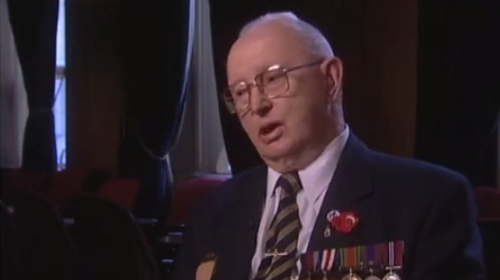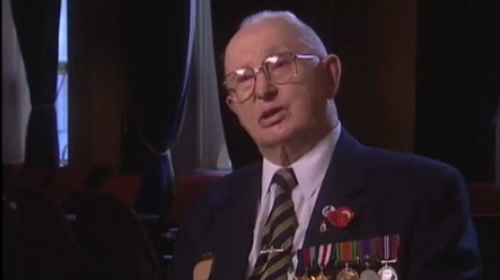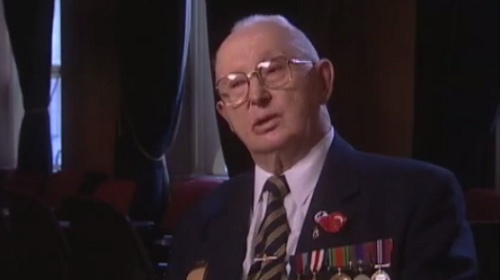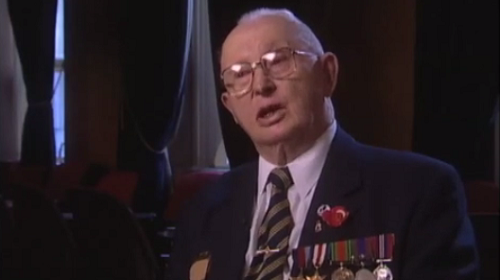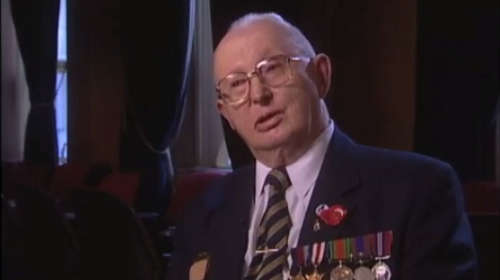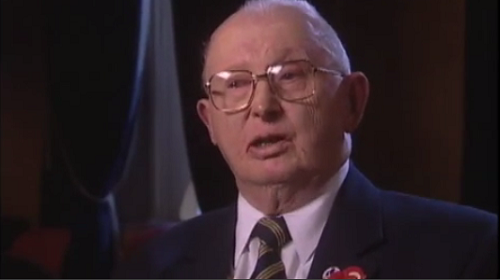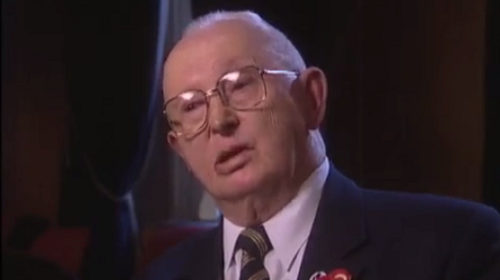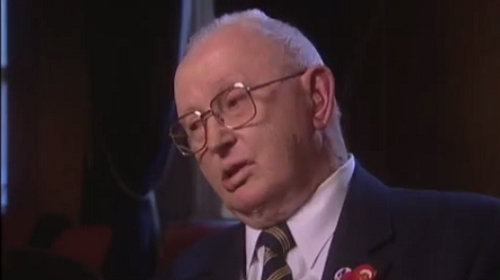We had like these five radios. We only carried five shells. Our job wasn't to fight,
our job was to get targets. We only fought if we were caught doing something.
So we would take our tank and mix with the Germans who would put a bombardment
on or at night we'd sneak in with them and we'd be camouflaged and the Germans
thought that we were part of their group too because I could talk a little bit of
German and if somebody was, you know, our driver, at night you don't see,
you bump somebody and somebody would tell you something in German,
well you just say, “Achtung, Heil Hitler,” and they thought you were a German
officer so they didn't bother you. See, they thought you were the officer giving
them a command. Well, I hit the officer, I got to get away from here. So we'd sneak
in with them and move out and hide wherever we could - if it was in a small bush
thing or some hill then we'd put our thing so you couldn't see it and then we'd get out
of our tank and crawl around and have a walkie-talkie and we had a military
artillery guy with us, officer, that as soon as we got, he would get the trajectory,
the coordinates so to get the right bombardment. That's artillery language for
how to target your target, test and adjust or something like that. Then they
would bombard these guys. We didn't travel too much, only when we had to
because we would run out of petrol, out of gas. We had to save our gas.
There was no service stations to pick up and we didn't know where our guys
were for a long time. And you'd get these targets and the Germans were
really good at picking you up as soon as you put your wireless on because at
that time it was all Morse code, and they'd start bombarding us so we'd have to
move around to get away from there. But see, they were targeting us because
we had the walkie-talkie. Not like, they were big things, clumsy things.
You don't get that today. They would try and get that so we'd move around,
and sometimes we'd walk around for miles in the hedges, crawling into bushes,
and stuff like that, on your belly. You'd look up and here's a snake looking at
you, and you'd say, “Gee, this is where I come to get shot or get bit by a snake?”
Oh yeah, they're trying to get us. They know where they are, because they have the
same thing. They knew that we were infiltrating... sometimes a mile, sometimes more.
You'd try and get your targets during the day and move somewhere at night because
you knew sooner or later they'd get you. They know that somebody in that area's got
some kind of a message going. This operator, our operator, would put it on, the whole,
the British, the Americans, would all get that same message and they would use their
method of attack or what kind of bombardment or shelling or maybe they sent a little plane in
there to catch them with. Some pilot come in with a... ‘cause they're always waiting.
Everybody was trying to get into one another's territory to get the best targets.



